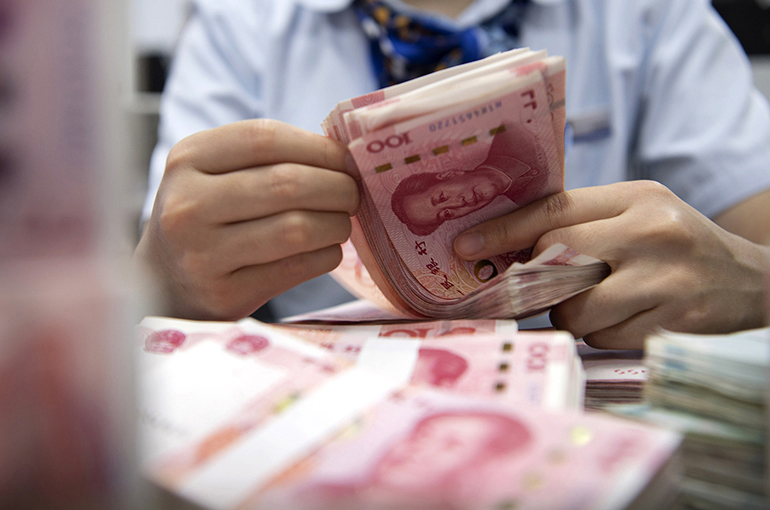 Exporters, Financial Firms Stay Cautious After Chinese Yuan’s Tepid Gains Versus US Dollar
Exporters, Financial Firms Stay Cautious After Chinese Yuan’s Tepid Gains Versus US Dollar(Yicai) May 19 -- Exporters and financial institutions remain cautious about a potential appreciation of the Chinese yuan against the US dollar, as it has not recently performed as strongly as other Asian currencies versus the greenback.
The US Dollar Index, which measures its value against a basket of major currencies, weakened 9.4 percent from this year’s high on Jan. 13 to a low on April 21. During the same period, most Asian currencies added between 5 percent and 10 percent versus the dollar, while the yuan edged up just 0.1 percent. Since then the index has gained 2.6 percent, and the yuan is up 1.1 percent.
On May 13, the People’s Bank of China set the yuan’s central parity rate at 7.1991 to the dollar, the first time it had been below 7.2 since early last month. The central bank further lowered the fix to 7.1916 today.
The dollar is expected to continue depreciating against the yuan in the short term, and the PBOC will likely further adjust the central parity rate to 7.17 or 7.18, Liu Jie, head of China macro strategy at Standard Chartered, told Yicai.
But the PBOC will not purposely support the yuan’s appreciation because the exchange rate is still tied to the domestic economic situation and the progress of trade negotiations with the United States, she noted, adding that any strengthening in the yuan will remain limited.
Among the investment banks that have updated their Asian currency forecasts, Goldman Sachs is the most optimistic about the yuan, predicted the exchange rate to drop to 7 this year if the two countries reach a permanent trade agreement.
Some financial institutions told Yicai that the yuan is unlikely to appreciate significantly because the threshold for the US Federal Reserve to lower interest rates remains high. The Fed’s first rate cut this year is expected to come within the last four months.
However, as the European Central Bank and Bank of England are likely to trim interest rates before the Fed, the chances of the dollar continuing to weaken are relatively low, according to financial institutions.
Several exporters and bankers noted that there are no clear signs of Chinese export firms converting their dollar receipts into yuan. But Asian businesses and institutions with high dollar holdings may consider diversifying their currency exposure in the medium term, even though the US Dollar Index is unlikely to continue weakening in the short term.
Exporters are not rushing to convert their dollar receipts into yuan because they find the 7.2 exchange rate unattractive and would rather wait, the head of corporate banking at a city‑level commercial bank told Yicai.
Even though there has been some conversion recently, that was partly offset by Hong Kong-listed companies buying foreign exchange to pay dividends in April and May, which is a dividend-paying season, forex specialist Liu Yang said. Businesses still expect the exchange rate to steady around 7.2 unless there is a major change in the trade situation, Liu added.
Chinese companies are actively looking for other ways to invest their US dollars, such as increasing investment in supply chain diversification and resource allocation through the Belt and Road Initiative, according to Zhang Meng, a macro and forex strategist at Barclays. So they may continue to hold dollar assets.
If the dollar continues to weaken below 7.15 or even 7.10, about USD100 billion may be converted into yuan, which would further push down the exchange rate to around 7, Zhang predicted.
Market participants are paying close attention to the next phase of the trade agreement between China and the US, as uncertainty persists. Australia and New Zealand Banking Group expects the final deal to be reached before the 2026 US mid-term elections or before the 2028 US presidential elections.
There are still obstacles to further lowering tariffs, according to Standard Chartered’s Liu Jie. Looking back on the trade war during US President Donald Trump’s first term, it took more than a year to reach an agreement, and it came just before the presidential election.
Editor: Futura Costaglione